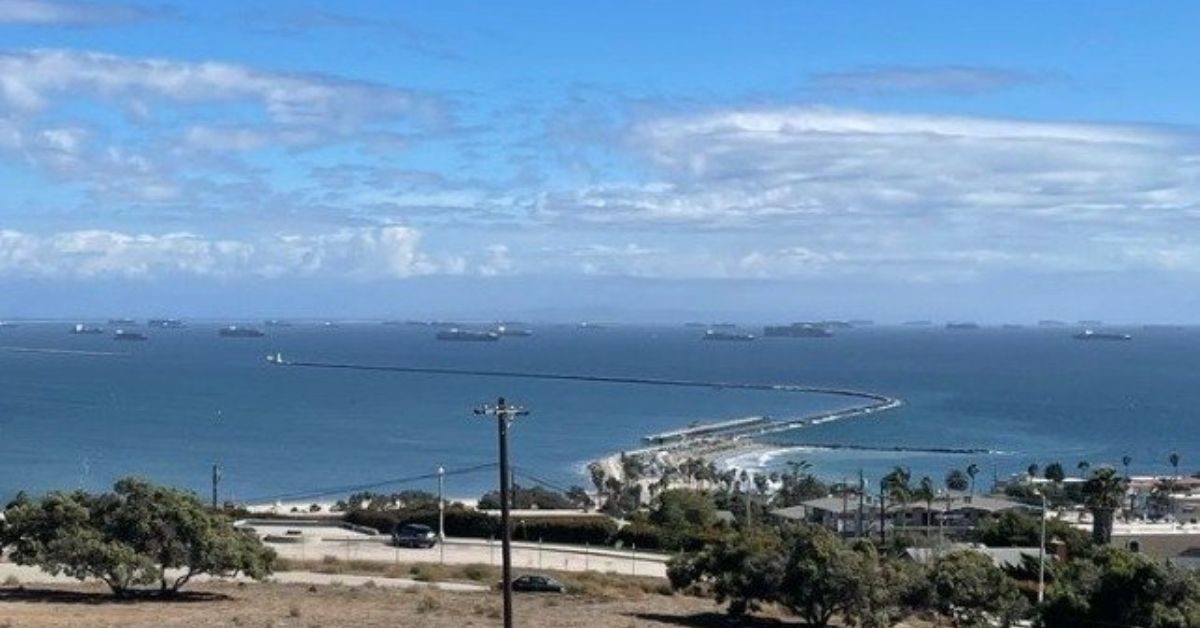The twin ports of Los Angeles and Long Beach have hit yet another new congestion milestone: a record 100 ships are waiting at anchor or in drift zones, including 70 container ships.
The San Pedro port complex is the busiest hub for U.S. import container traffic, and its terminals have been hard pressed to keep up with voracious American demand for consumer goods. 80 percent of the products consumed in the U.S. are imported, and with spending on in-person services curtailed by the pandemic, Americans can budget more for goods than ever before. This means that more inbound cargo and outbound empties are passing through the LA/Long Beach truck gates than ever – roughly 10 percent more than in September 2019, before the COVID-19 pandemic hit the global supply chain.
Still, the ports’ sustained effort has not been enough to offset the firehose of cargo volume coming from China’s biggest export ports. The number of vessels drifting or anchored off LA / Long Beach has steadily risen for months, regularly setting new records. As of Tuesday, the count stood at 100 vessels, beating last month’s record of 97. (In a previous bout of congestion in 2014, the ports were astonished to see 12 vessels waiting.) As might be expected, dozens more are in transit on the core transpacific trade lanes, and the number of waiting ships may well rise.
Following pressure from President Joe Biden, LA / Long Beach terminal lessees have agreed to transition to 24/7 gate hours, incurring a contractual time-and-a-half wage premium for longshoremen on the night shift. However, extended hours are not expected to resolve the supply chain crisis at a single stroke: the backlog is just as serious in rail yards, truck depots and warehouses.
“These issues go through the entire chain, from ship to shelf,” Secretary of Transportation Pete Buttigieg told ABC. “That’s why we’re not just working with the ports. It’s the truckers, the rail companies, the operators and also those retail companies that are at the other end of those supply chains.”
Any relief would be welcomed by American retailers, and by the ports’ local neighbors. In addition to elevated emissions from idling vessels and extra truck traffic, residents of Wilmington and Long Beach have to put up with trailered containers tailing back into residential streets.
“Sometimes they just unload the trailer in the street with no front part of it [truck], and they just leave it there,” resident Sonia Cervantes Told CBS Los Angeles.
Source : Maritime Executive







